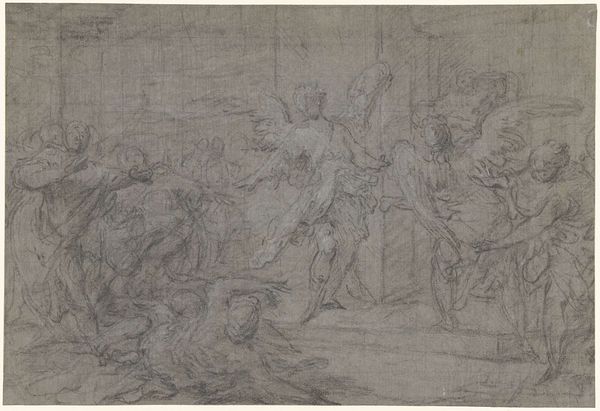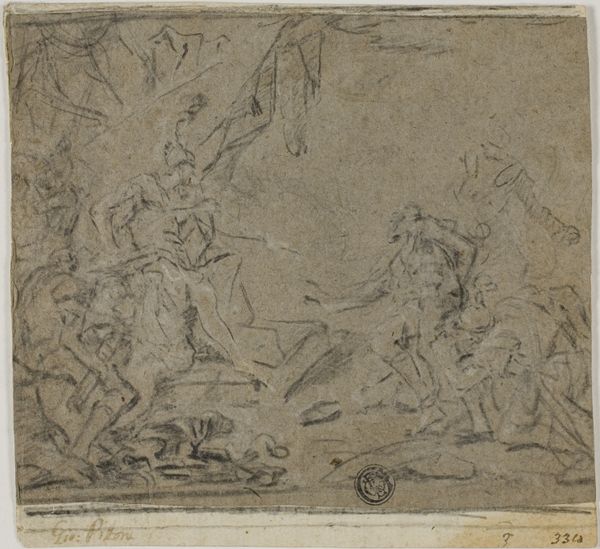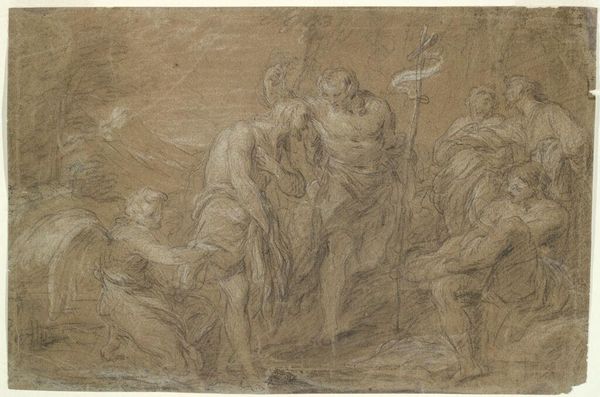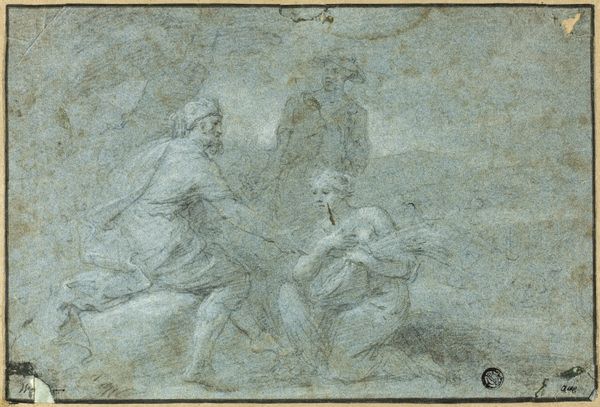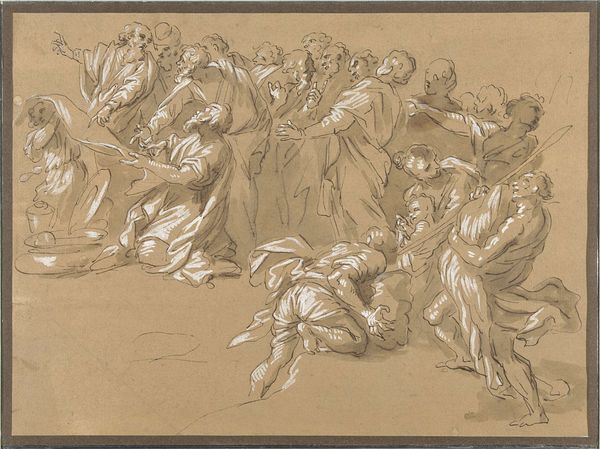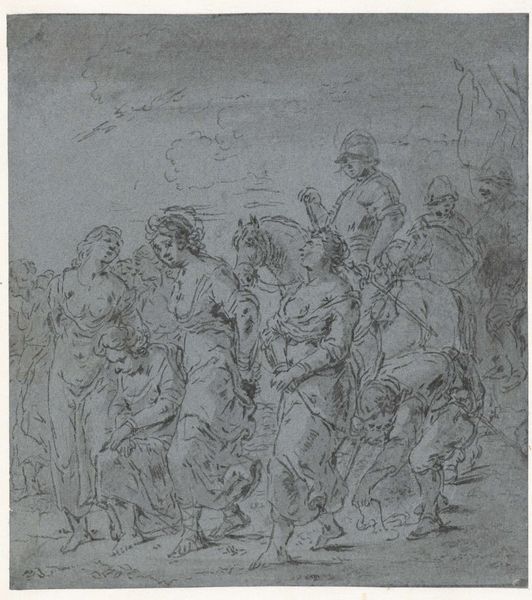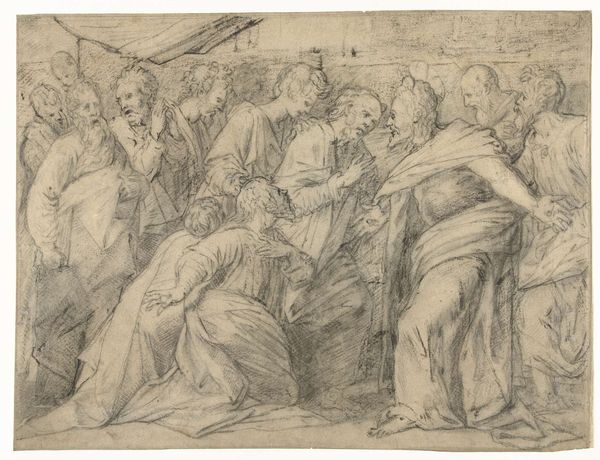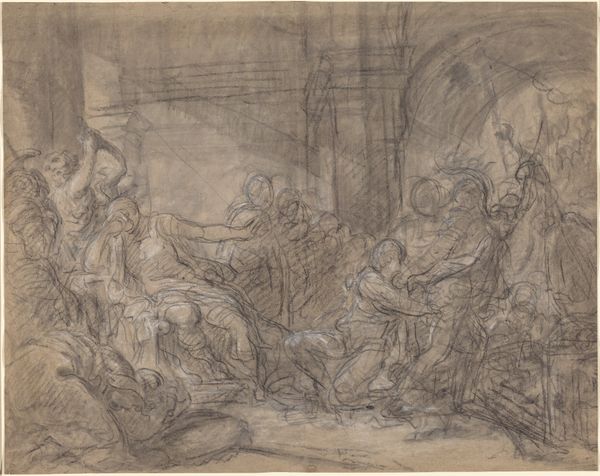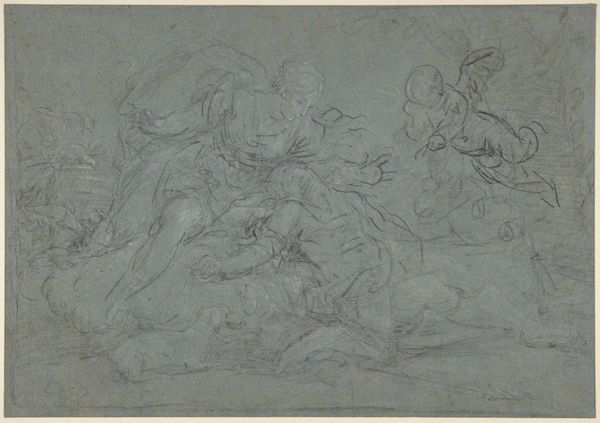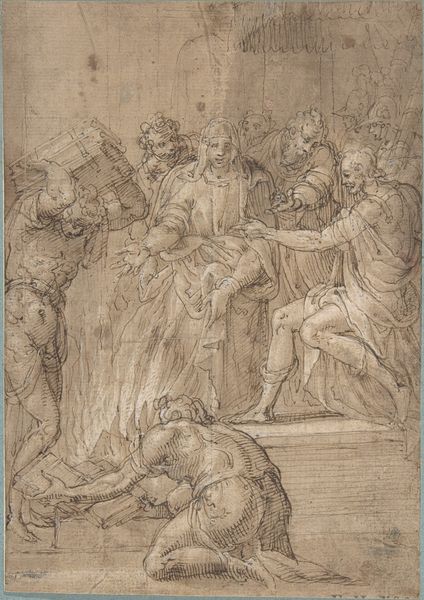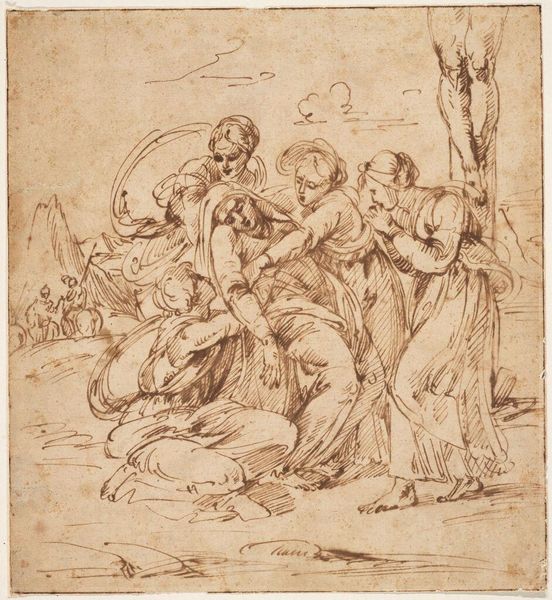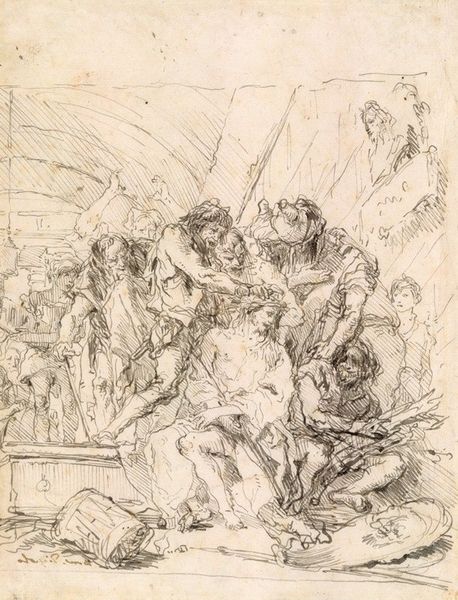
Study for Saint Benedict Receiving Gifts from the Peasants c. 1604
0:00
0:00
drawing, paper, chalk, black-chalk
#
drawing
#
baroque
#
figuration
#
paper
#
chalk
#
history-painting
#
italian-renaissance
#
black-chalk
#
watercolor
Dimensions: 198 × 197 mm
Copyright: Public Domain
Curator: Right, let's dive into this beautiful, slightly enigmatic drawing here at the Art Institute of Chicago. This is Guido Reni’s "Study for Saint Benedict Receiving Gifts from the Peasants," circa 1604, done in black chalk on paper. Editor: Ethereal. That’s the first word that pops into my mind. Like a memory surfacing or figures materializing out of mist. It's got this dreamlike, hazy quality. Curator: Exactly! You’re seeing what Reni does so well – capturing fleeting moments, especially when they're infused with a touch of the spiritual. This drawing isn't the final piece but preparatory, giving us this intimate look at his artistic process. Editor: And all those arms, the slight disarray, gives me that urgent feel as well. The gift-giving isn’t orderly, it’s human. Look at that kneeling figure, the way he strains toward Saint Benedict. Curator: Reni, working during a period when the Church was keen on promoting its saints, chooses a moment brimming with humanity and generosity. Think of the peasants—ordinary people bestowing gifts, the literal fruits of their labor, onto the Saint. The visual exchange suggests much more than a simple transaction. Editor: Yes, and Benedict himself, ever the pillar of serenity. I imagine Reni wanting to capture more than the act of giving, and perhaps revealing the sacred through the symbol of selfless sharing. Curator: And the way he renders them! The use of black chalk allows him to create this chiaroscuro effect—the light and shadow creating depth and drama. It gives a sense of movement and the barely-there-ness captures this quiet moment perfectly. It's as if he’s capturing not just a scene, but an emotional exchange. Editor: You know, reflecting on it, what really stays with me is the way Reni uses this sense of incompleteness to provoke thought. It invites us to fill in the narrative ourselves. Curator: Yes! I love how this “unfinished” quality feels so very complete in the telling of it. Editor: Beautiful indeed.
Comments
No comments
Be the first to comment and join the conversation on the ultimate creative platform.
